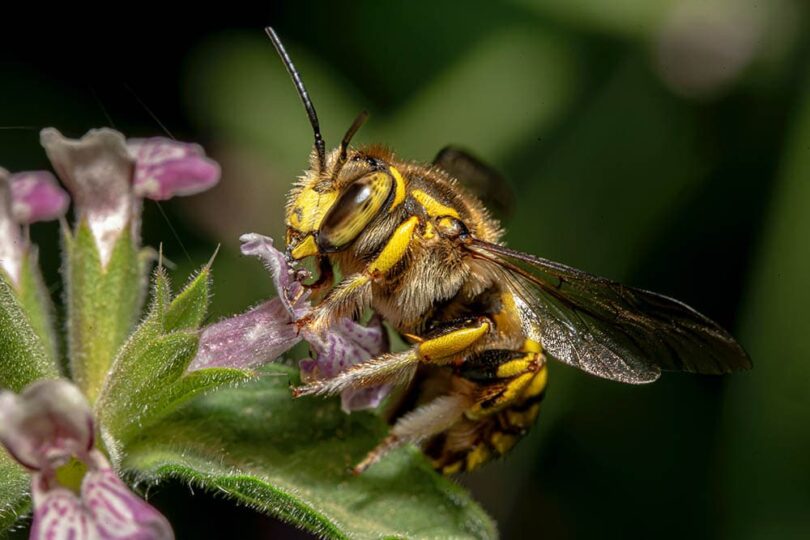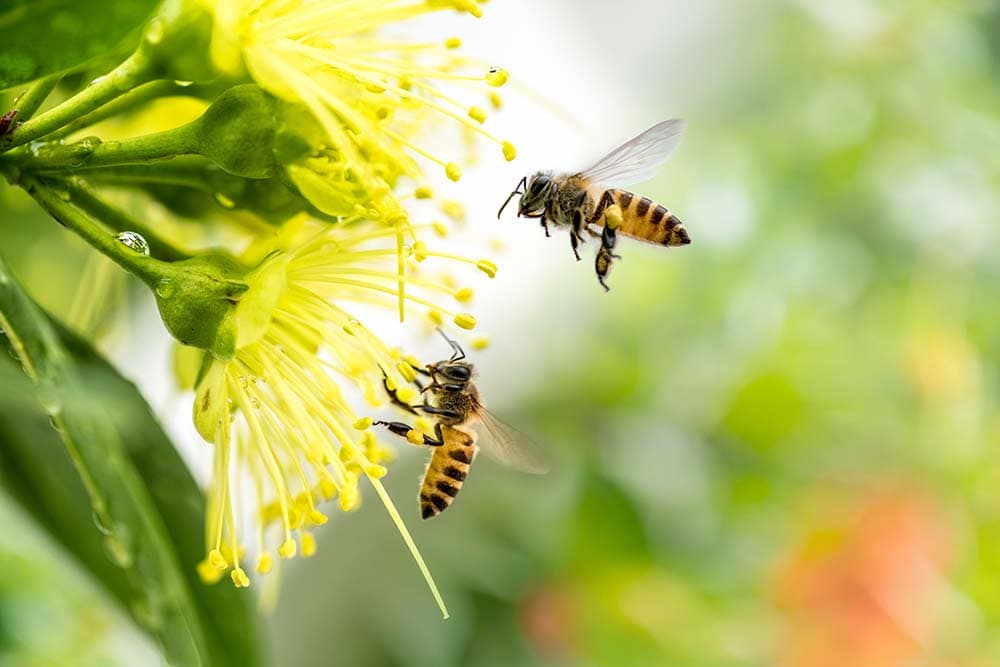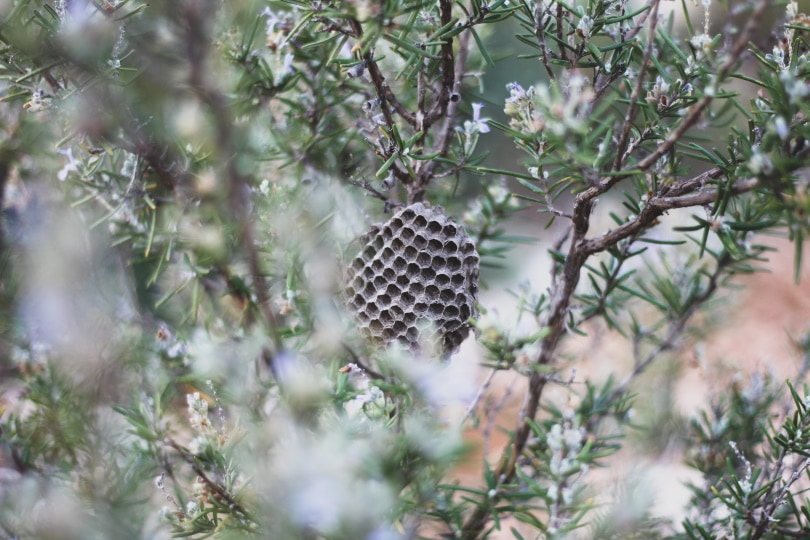Do Bees Die When They Sting? Facts, Prevention, & FAQ
-
Brooke Bundy
- Last updated:

As much as you hate being stung by a bee, the bee hates it even worse. Since its stinger is shaped like a corkscrew, the bee’s lower abdomen rips open when it retrieves its stinger from your skin, which results in its death. Because of this, a bee will only sting you as a last resort, mostly to protect the hive. Not all species of bees sting, and even of the ones that can, only females have stingers. Read on to learn about the different types of stinging bees, as well as how to avoid bee stings and what to do if one decides you’re worth losing its life.

Types of Bees That Sting
Social bees such as the honeybee or the bumble bee are more likely to sting you than solitary bees. Most social bees live in hives, but the bumble bee is an exception as it lives underground. Contrary to popular belief, only 10% of the overall bee population actually lives in hives and they tend to be social honeybees. Most dwell underground, or in cavities such as tree hollows. Even though bumble bees live underground, they’re still social bees and are more likely to sting you than solitary bees if they feel threatened.
Only female bees have the capability to sting. Males don’t have stingers. Queen bees may sting to protect the hive, but most times it’s the female workers who will sacrifice their lives to protect the nest. The stinger’s barbed design is the reason a bee dies after a single sting. Shaped like a corkscrew with a harpoon on the end, the female worker bee can penetrate human skin, but since its stinger is hooked it can’t escape without ripping out its lower abdomen. Thus, the bee dies shortly after stinging you. A female worker can sting other bees multiple times however, since their stinger won’t dig as deep. However, stinging a human or an animal with thicker skin such as a dog will be fatal to them.

Perhaps one of the reasons most bees won’t sting is that they don’t live for very long. Solitary bees only live for a few weeks, just long enough to mate. They’re passive creatures who’ll typically let you be if you leave them alone because they want to produce offspring before they die. Some solitary species don’t have a deep enough barb to penetrate human skin, and most won’t even try unless they feel seriously threatened.
Conversely, female worker bees also don’t live very long, but they have nothing to lose. Their queen is the only one who is capable of reproduction. The female workers’ goal is for the queen to continue building the colony, so they’ll sting with less hesitancy than a solitary bee who needs to survive in order for the population to increase.
How to Prevent Bee Stings
Since bees can only sting you once, most are peaceful creatures that won’t bother you if you don’t make them feel threatened. Even if they personally feel confronted, they still might not sting you unless you’re near their nest. Female workers are passionately loyal to their community and will lay down their life to protect the male drones and the queen if necessary.
In general, stay at least 10-20 ft. away from bee nests and avoid confrontation. Bees are also attracted to sweet nectar and bright colors, so avoid coming out on your patio with a bright pink shirt and a honey tea if you know that a substantial bee population lives nearby. If you do see a bee hovering curiously above your drink, don’t swat at it or make it feel threatened. Try to leave it alone, and the bee will probably treat you with the same respect.
If you’re out in the garden, avoid touching bees you might find on flowers. Again, observing from a distance can let you witness the graceful dance of the honeybee without its painful sting.

What to Do If You’re Stung By a Bee?
Despite your best efforts, maybe you didn’t see a hive nearby or you panicked and got stung. Either way, bee stings do happen, and fortunately, they’re easy to treat unless you’re allergic.
If you suspect you might have a bee allergy because of symptoms such as difficulty breathing or excessive swelling, please visit your nearest hospital at once. Some people are fatally allergic to bees, and you’ll need treatment immediately.
If you’re feeling normal despite the annoying sting itself, then you can treat the problem at home.
- Calmly walk away from the scene. Avoid making sudden movements such as flailing your arms because that can make you seem like a threat to other bees who might also sting you.
- Remove the stinger with your fingers. Don’t use tweezers since that can push more venom into your skin. Instead, gently scrape your skin with your fingernails or a piece of gauze. It’s also possible the bee removed all of the stinger when it flew away.
- Wash the spot with soap and water. Thoroughly clean the site of the sting.
- Apply ice. You can use a cold pack to reduce the inflammation or take an ibuprofen for the pain.
- Watch for symptoms of an allergic reaction. If you notice swelling on any other part of your body, or if you’re having trouble breathing, go to the emergency room immediately.


Conclusion
Although bee stings are painful, only females have the capability to sting you, and they’re less likely to attack you than an aggressive wasp or hornet since they’ll die after withdrawing their stinger. Avoiding nests and remaining calm in the presence of bees will make you less of a target, allowing you and the bees to enjoy your backyard together. Bee stings are fatal to your assailant, but rarely more than a painful nuisance to you. However, if you notice symptoms such as difficulty breathing or excessive swelling, go to the emergency room immediately because a bee sting can be potentially fatal to you, too.
- https://www.aad.org/public/everyday-care/injured-skin/bites/treat-bee-sting
- https://www.ealt.ca/blog/social-bees-vs-solitary-bees
- https://www.washingtonpost.com/lifestyle/kidspost/have-you-ever-wondered-why-bees-sting/2017/05/05/4a4aaa90-28fb-11e7-a616-d7c8a68c1a66_story.html
- https://www.noble.org/news/publications/ag-news-and-views/2017/march/11-myths-about-bees/
- https://www.pollinator.org/blog-old/no-fear-of-stings
- https://www.pbs.org/newshour/science/honeybee-sting-kill-bee
Featured Image Credit: Akbar Nemati, Unsplash
Contents
